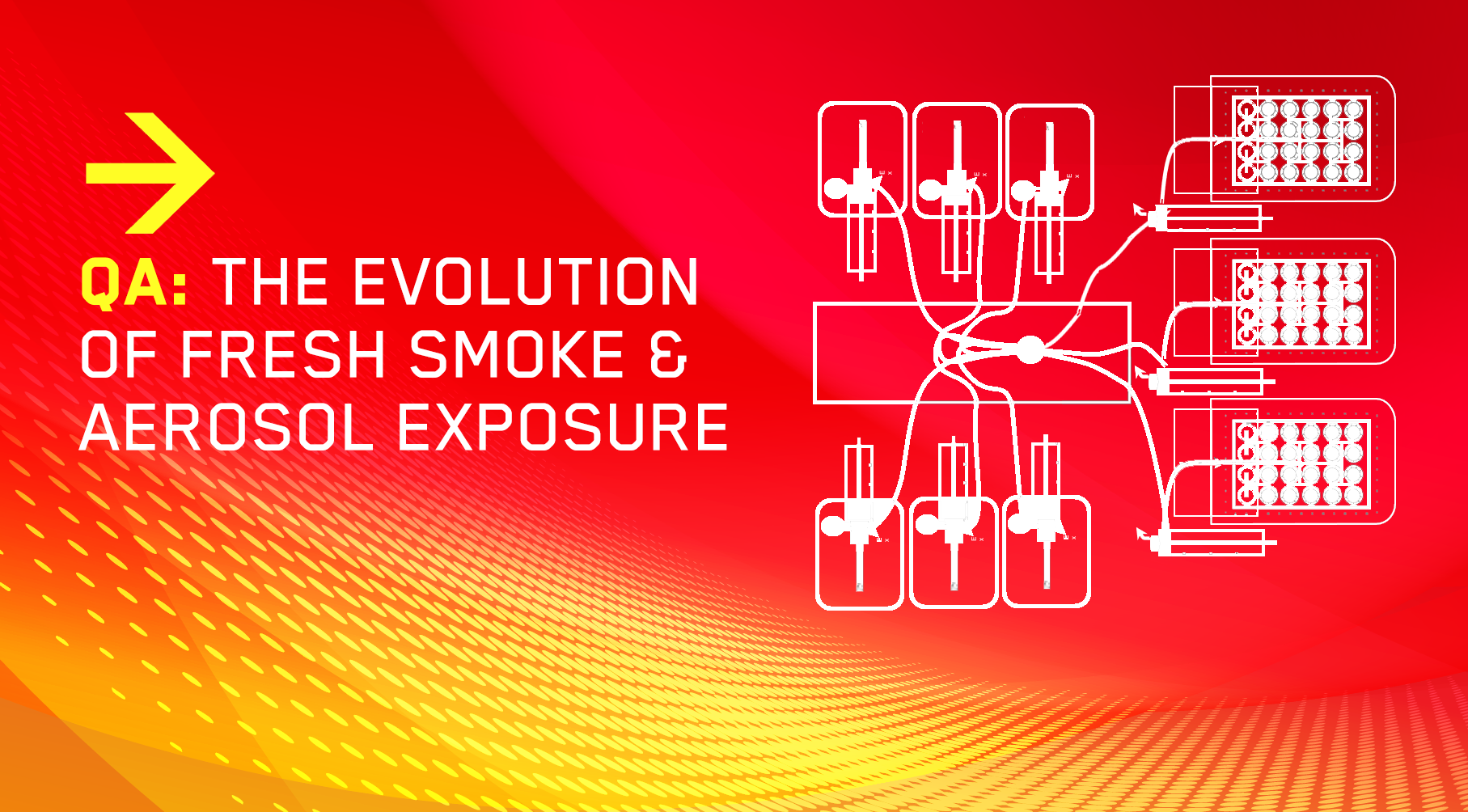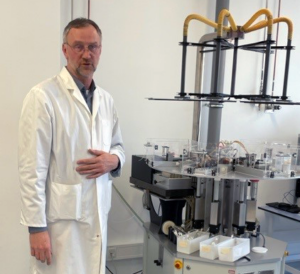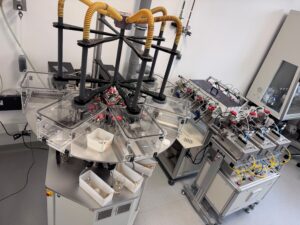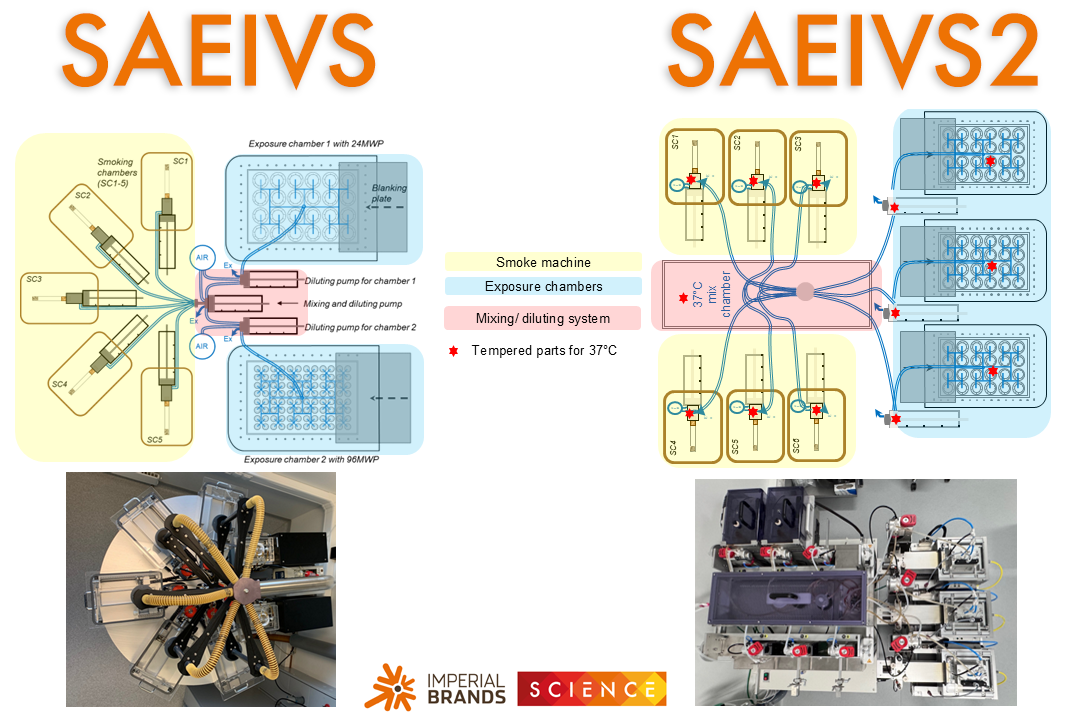
Imperial Brands’ Hamburg laboratory has recently taken delivery of the SAEIVS2. Short for ‘Smoke/Aerosol Exposure In-Vitro System 2’, it’s a state-of-the-art ‘smoking machine’.
But what exactly are smoke machines, and how are they making a vital contribution to our next generation product (NGP) science and our ambition to make a meaningful contribution to tobacco harm reduction?
Science Communications Manager Rob Taylor spoke to Group Biological & Toxicology Lab Manager Roman Wieczorek to find out more about our laboratories, and the past, present, and future of smoke/aerosol capture, and in-vitro testing.
Roman, tell us about your academic background and role at Imperial Brands…

I joined the business from my post-doctorate position at the University of Münster as a microbiologist with a background in entomology.
I’ve since worked for Imperial Brands – initially for Reemtsma – for over 26 years, having managed our biological and toxicological laboratory in Hamburg since 2010. Our team of highly committed biologists have evolved and grown significantly during that time.
Our main task is the toxicological testing of our product portfolio, but we also conduct microscopic analyses and microbiological examinations. Furthermore, we support our microbiological laboratory at SKRUF in Sweden, and the Radom site – which focuses on tobacco-free oral nicotine pouches – in Poland.
Can you tell us more about Imperial Brands’ laboratory facilities in Hamburg?
As well as our chemical and physical laboratories in Hamburg, there’s also a biological lab.
Our biological activities begin with microscopy and the blend analysis of the mixture of tobacco products, before continuing with microbiological methods, and culminating with a range of in-vitro toxicological methods. A particular highlight is the determination of inflammation markers in human tissues exposed to cigarette smoke and NGP aerosols.
Our specialty is developing methods specifically for cells exposed to freshly generated aerosols. Our laboratories are also heavily involved with the Alternatives to Animal Testing initiatives, and have developed many new techniques as part of this approach.
But first you must capture those aerosols, right?
Yes, and we do this using ‘smoke’, or ‘smoking’ machines.
These bespoke, highly complicated pieces of machinery were developed to enable standardised cigarette ‘smoking’, and latterly the generation of aerosol puffs from vapes and heated systems.
Owing to their high precision and level of automation, they’re used for the routine analysis of smoke and aerosols across a wide range of product characterisation and biological testing.
Aerosol is generated in different ways depending on the product; for instance, smoke machines for biological examinations have special requirements in terms of needing to deliver freshly generated smoke or aerosol as quickly – and as loss-free – as possible, before exposing them to cells.
Simply, as in-vitro technologies and methodologies have evolved over time, so must our means of capturing the smoke and NGP aerosol required to undertake such studies.
Can you explain in more detail why it’s so important our scientists are able to accurately capture smoke/aerosol?

Our role in Imperial Brands’ scientific assessment framework is to examine the smoke/aerosol of the products our consumers enjoy.
However, chemical analyses are not the only thing necessary to obtain regulatory approval to sell our products. Biological data is becoming increasingly important.
Once inhaled, smoke/aerosols reach the lungs within seconds. We want – and need – to replicate these scenarios as closely as possible so we’re able to measure and analyse the ensuing biological effects on humans.
The standard method still used in many laboratories is to test extracted condensates. In terms of cigarette smoke, it’s clear that what is referred to as total particulate matter (TPM) is not an entirely fresh component. For instance, the gas phase is completely missing.
Thanks to SAEIVS, and now SAEIVS2, examinations on truly fresh smoke and NGP aerosol are the standard when it comes to product testing at Imperial Brands.
Who was involved in SAEIVS2’s creation?
The basic idea for the system originated as early as 1999. My manager at the time was dissatisfied with the development of the exposure system developed for the tobacco industry, and began to seek alternative solutions.
After coming up with a concept for a bespoke machine, we approached an external partner which resulted in the creation of our BT020. After a decade of using the BT020 we developed and produced the SAEIVS (2016) with the same company.
Almost a decade on, owing to ever-increasing demand for NGP in-vitro aerosol testing, we recently developed the SAEIVS2 in partnership with Körber.

What benefits does SAEIVS2 have compared to its predecessor?
As NGP have become ever more popular in society with consumers, regulatory testing requirements have increased accordingly.
The original SAEIVS was designed specifically for studies involving combustible tobacco; it could only be converted to capture NGP aerosol to a limited extent.
So, owing to increased internal and regulatory demands for high quality in-vitro aerosol data, another SAEIVS was urgently needed.
SAEIVS2 was conceived, designed, and manufactured with NGP in mind. It’s far more efficient when it comes to capturing NGP aerosol, as well as having an increased number of exposure chambers. This means our testing capacity also improves.

SAEIVS is ISO (International Organisation for Standardisation) accredited; why is this important? Will SAEIVS2 also be accredited?
Most laboratory tests require independent approval of the methods they utilise.
Official accreditation – in this case to ISO 17025 – demonstrates that this system meets established quality standards.
We’re in the process of validating the methods at the SAEIVS2 for ISO accreditation; our tests will be accredited for cytotoxicity and genotoxicity by the DAkkS, the national accreditation unit of the Federal Republic of Germany.
(For more information on the importance of technical standards and why they’re key to creating quality NGP, please see our blog.)
How will the data from SAEIVS help inform our future scientific research and engagement around cigarette smoke and NGP aerosol?
As a responsible manufacturer committed to safeguarding our consumers (see our infographic for more), it’s important that our science is constantly evolving.
The purpose of in-vitro toxicology is to research the effects of smoke and aerosol on the human body. SAEIVS2 is specially designed for optimum aerosol exposure, which allows us to replicate extremely realistic air-liquid interface. This technique is the ultimate in research when simulating the effects of both smoke and NGP aerosols on consumers’ lungs.
In recent years, the data generated from SAEIVS has formed an important part of our external publishing and presenting plan; including CORESTA and the wider peer-reviewed academic literature.
We’re excited about the arrival of SAEIVS2, and its important potential contribution to future NGP science and consumer health.
Thanks for your time, Roman.
Find out more about our consumer-centric approach to THR and NGP in Beyond Smoke.
Follow us on LinkedIn and read more about our intentions to help create potentially healthier futures for our consumers on our corporate website. You are free to share this content with credit to Imperial Brands under a Creative Commons Attribution-NoDerivatives 4.0 International (CC BY-ND 4.0) license.
